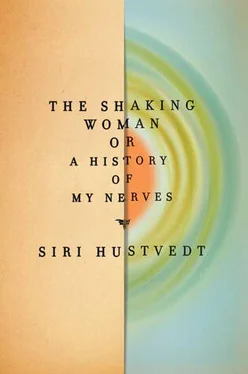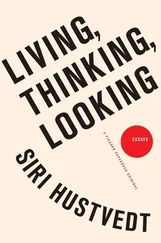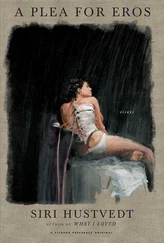I undress, put on a hospital gown, and walk back and forth across the room for her. We play clapping games. I touch my nose with my index finger. She looks in my eyes. No sign of pressure or brain tumor. She strokes my hands and the bottom of my feet with a cold instrument. I feel it all. Good sign. She uses a tuning fork. She tells me I have “nice, fat arteries,” and I’m pleased to hear this. She wants to know if I’ve ever taken Depakote for my migraines, an anti-seizure medicine. I tell her no. She recommends MRI, two of them.
I look at the sheet on which she has scrawled in a large but clear hand:
1. Please do Brain MRI: Temporal Lobe Epilepsy — without GADO. protocol 345.4
2. Cervical spine MRI — Nogado/posterior column, C-2—C-5. Dx323.9 / 721.1 Thank you. L.L. MD.
On the subway traveling home, I feel my mood, which had been buoyant with the doctor, drop precipitously. Dr.C. and Dr. L. have both been more than competent and extremely kind, but I understand that by debunking hysteria they have raised the specter of additional neurological illness, the possibility that I have more-than-just-migraine. While neither conversion disorder nor migraine is appealing as a diagnosis, neither one is fatal. Since my seizure in Paris in 1982, I have worried that my headaches may hover close to epilepsy. According to the authors of Behavioral Aspects of Epilepsy, “Migraine and epilepsy are in many respects similar brain disorders. Both are common. Epilepsy may be, and migraine is, by definition, a primary, presumably genetic disorder.” 152Later in the same chapter, they write, “The two disorders are more than twice as likely to occur in the same person.” 153In his book Migraine, Oliver Sacks reflects on the historical distinctions and overlaps between the two illnesses. Although there may be a theoretical relation between them, “in practice,” he writes, “it is easy to differentiate migraines from epilepsies in the vast majority of cases.” After listing the features that make a categorical diagnosis relatively simple, he acknowledges a “twilight region” that confounds “rigid nosologies.” He then cites an author who coined the term “migralepsy” for a patient who showed symptoms of both. 154I would place Dr. Sacks firmly in James’s category of the tender-minded. Unlike many of his fellow practitioners, he acknowledges not only the twists and turns of medical history but the genuine ambiguities that arise when we try to attach names to phenomena that resist clarity: “Finally the problem may cease to be one of clinical or physiological differentiation, and become one of semantic decision: we cannot name what we cannot individuate.” 155Blurring borders create abiding conundrums.
SINCE CHILDHOOD I HAVE EXPERIENCED lifting sensations and euphorias, floods of deep feeling that arrive in my body as a lightness in my head and seem to pull me upward. An unearthly clarity of vision and a feeling of high, perfect joy have preceded my most brutal and durable headaches. And once, well into my adulthood, I saw my small pink man and his pink ox on the floor of my bedroom. Later, I discovered that apparitions of little figures also have a name: Lilliputian hallucinations. I now recognize all of these states as aura phenomena, part of my life as a migraineur. What has changed since I was a child are not the auras but the content I assign to them. I no longer imagine the presence of the supernatural. I attribute these flights and drops to my nerves, but that attribution doesn’t mean the experiences have no meaning for me or haven’t been important to who I am. What I think about the event affects the event itself. Epileptics also have auras — smells, sensations, and feelings of gloom, fear, or ecstasy that may precede a seizure. Throughout medical history, physicians have made links between illness and character. Researchers have speculated about migraine personalities in an effort to look for shared traits among the sufferers, but so many people have these headaches, along with various kinds of auras, that the hope of finding a migraine type has been mostly abandoned. With people who have temporal lobe epilepsy, however, there seem to be some broadly shared characteristics, including a tendency to be religious. Hippocrates first linked epilepsy to religiosity around 400 b.c., an observation that has been reiterated over time, into the modern era. 156Emil Kraepelin, the famous turn-of-the-century doctor whose rigorous classifications of psychiatric disorders were highly influential, also noted that epileptics appeared to have strong spiritual leanings. 157
The association of pathology with personality brings us yet again to a larger question: What are we? To what degree can beliefs, including religious ones, be linked to a person’s neurobiology? Many people are comfortable with the idea that an illness like epilepsy, or a stroke or head injury, can alter a person’s character but are perhaps less sanguine about the idea that each one of us discovers “truths” through his nervous system. Despite the fact that my parents displayed only conventional adherence to Lutheranism, I was not only pious as a child, I was quietly fervent. Later, when my belief in God fell away, I lost the piety but retained the fervency. What has remained in its stead is a deeply felt sense of meaning unaccompanied by dogma.
A number of popular articles in recent years have trumpeted the discovery of a “God spot” located in the temporal lobe of the brain. In 1997, the Los Angeles Times noted, “ ‘There may be dedicated neural machinery in the temporal lobe concerned with religion,’ the team reported.” 158Notice the curious collapse of semantics into anatomy: dedicated neural machinery in the temporal lobe concerned with religion ? The “team” is not saying that certain sensations and feelings experienced by human beings over the course of our history may have been attributed to the supernatural. They say religion is “hardwired” into our brains and, by doing so, they strongly resemble the nineteenth-century phrenologists who divided the brain into discrete, isolated regions, each of which had a specialized function. Tickle this spot and you’ll believe in God. It is not hard to see this crude reduction of enormous historical and sociological realities to a bit of brain as philosophical naïveté at its worst. Another study disputed this finding, discovering “religion” all around the brain, including in those areas associated with emotional attachment, maternal care, and a child’s early bonding with its mother. Surely, religious feeling is not a single entity. Rounding up religious epileptics or a group of Carmelite nuns, asking them to think about religion, and then testing their galvanic skin responses or putting them in fMRIs is bound to reap mixed results.
It does seem plain, however, that some people are more vulnerable to what Freud called “the oceanic feeling” than others. Freud declared that he did not have it but recognized its presence in other people. After a conversation with the novelist Romain Rolland, he wrote about the phenomenon in Civilization and Its Discontents:
It is a feeling he [Rolland] would call a sensation of “eternity,” a feeling as of something limitless, unbounded — as it were, “oceanic.” This feeling, he adds, is a purely subjective fact, not an article of faith; it brings with it no assurance of personal immortality, but it is the source of the religious energy which is seized upon by the various Churches and religious systems, and doubtless also exhausted by them. One may, he thinks, call oneself religious on the ground of this oceanic feeling alone, even if one rejects every belief and every illusion. 159
Freud speculates that this oceanic quality is an implicit memory of our early life when our egos were not fully separated from the world around us. His idea resonates with those of the researchers who found a connection between religious feeling and mother-child attachment. This forgotten period, according to Freud, then persists as a sensation of oneness with the world. Infancy is irretrievable. Its memories live underground. To what extent they return by stealth or are triggered by various catalysts remains an ongoing question, but what Freud understood through his conversation with Rolland was that “oceanic” does not necessarily mean a set of religious beliefs.
Читать дальше












